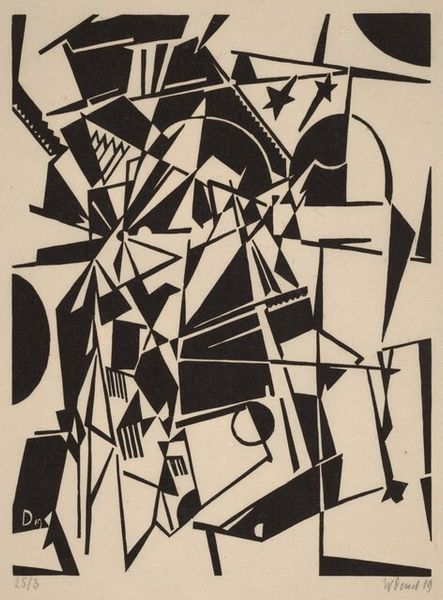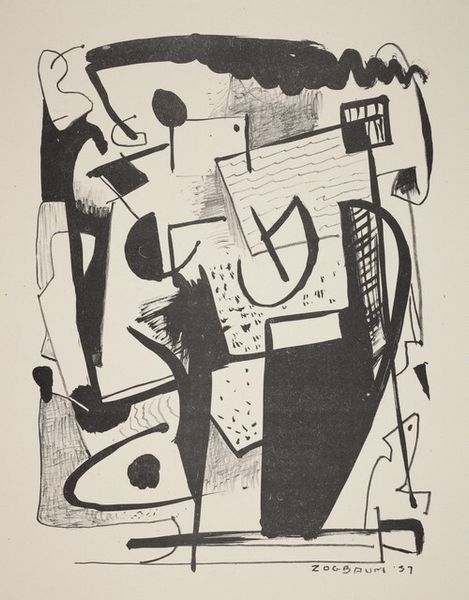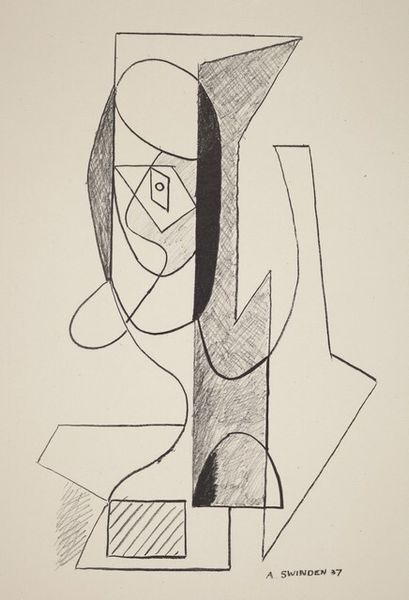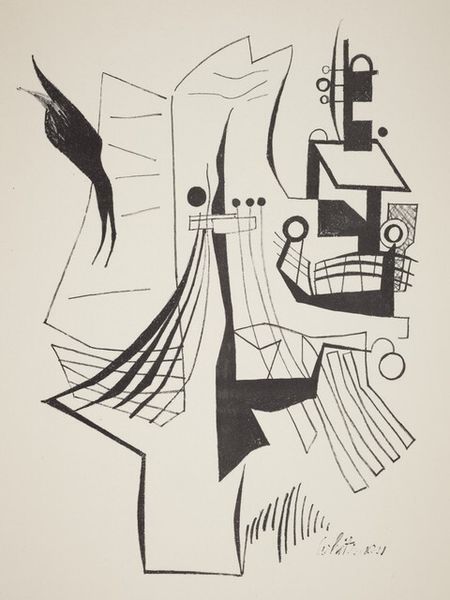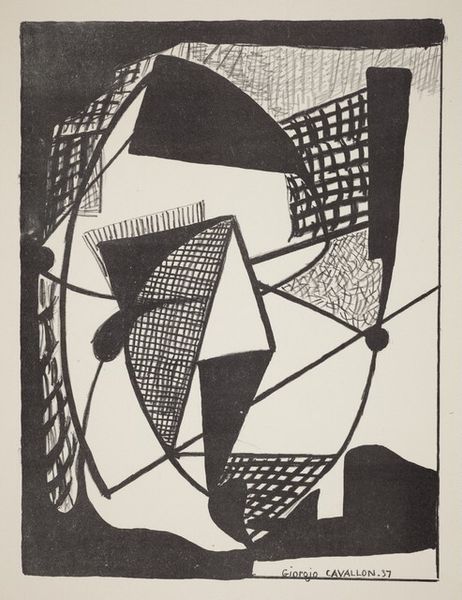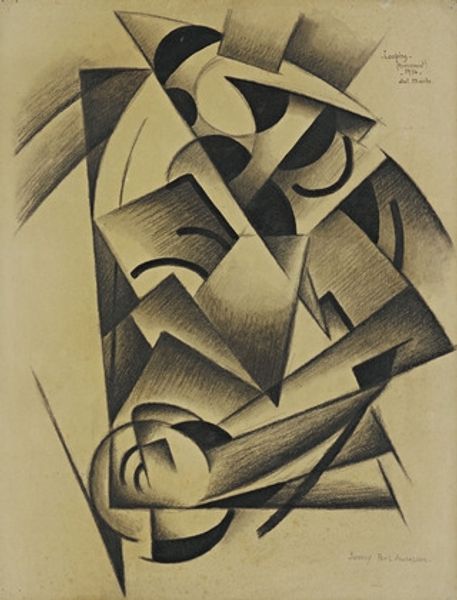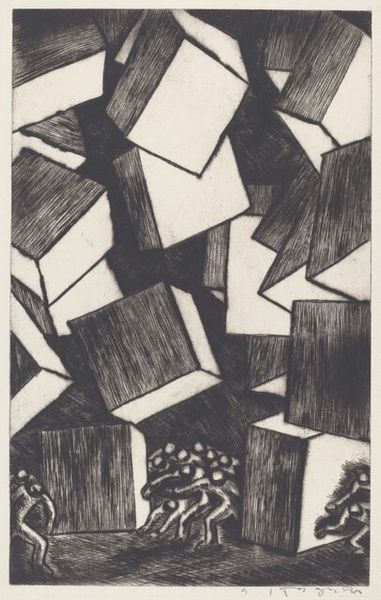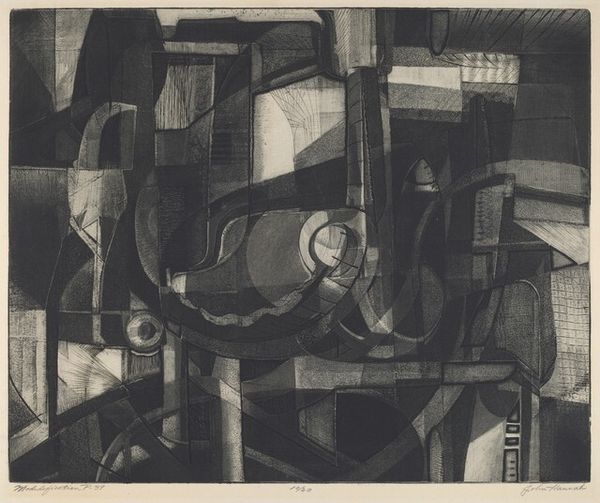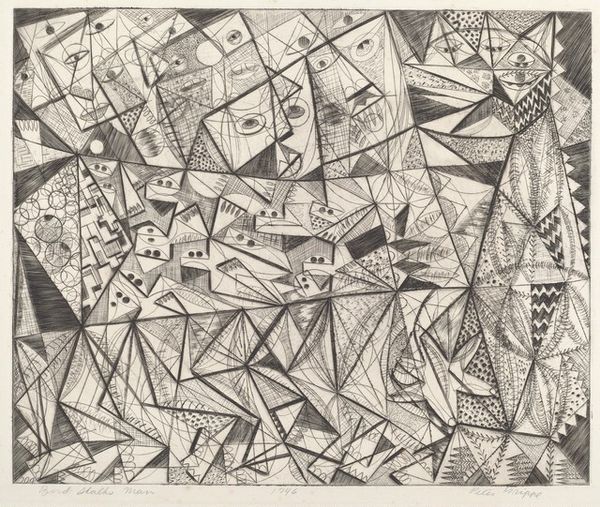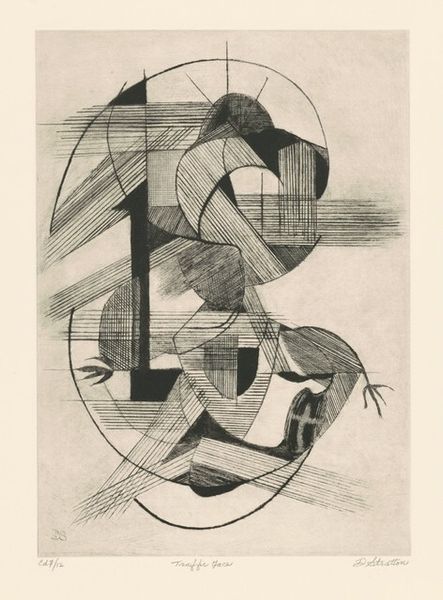
drawing, print, ink, graphite
#
drawing
# print
#
constructivism
#
ink line art
#
ink
#
geometric
#
abstraction
#
graphite
#
modernism
Dimensions: image: 330 x 279 mm paper: 337 x 279 mm
Copyright: National Gallery of Art: CC0 1.0
Curator: Here we have George Lovett Kingsland Morris’s "Untitled (Abstraction)," created in 1942 using ink and graphite. What are your first thoughts? Editor: Visually, it’s chaotic. A jumble of black and white geometric forms that appear trapped, or perhaps playfully arranged. Is there a dominant structure holding it all together? Curator: I'm drawn to its dynamism, that seemingly deliberate chaos you mentioned. The overlapping shapes and contrasting textures – the stippling against the stripes, the solid blacks against the delicate line work. It exemplifies Morris’s exploration of Constructivist principles, doesn't it? Editor: Morris was definitely engaging with radical political ideas, like the utopian visions often linked to geometric abstraction in the early twentieth century. This was produced during the war; could the fragmentation be reflective of broader societal anxieties or displacement? Curator: Certainly, and thinking about Constructivism in the '40s, after its heyday, provides interesting context. The tension is palpable in the layering. Note how the interplay between positive and negative space activates the surface. It refuses a singular focal point. Editor: I find the textures really speak to that tension you describe. It makes me wonder what role mass production had in creating a feeling of instability for some artists at this time. It all reads as visually unsettling despite being rigidly designed. Curator: Absolutely. He disrupts the clean, machined aesthetic one might expect. And yet the composition remains meticulously balanced, which in itself, communicates both intention and calculation. Editor: Is there some irony implied then? Creating an artistic output that addresses war time anxieties but, ultimately, aestheticizes that suffering? Curator: Well, that’s open to interpretation. One could also argue that it’s an attempt to find order and harmony amidst chaos. Editor: Indeed, a fascinating, multi-layered work that invites deeper investigation. I have a strong sense this will sit with me for a while. Curator: For me too. A true testament to the enduring power of abstract forms.
Comments
No comments
Be the first to comment and join the conversation on the ultimate creative platform.
